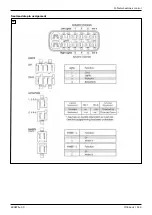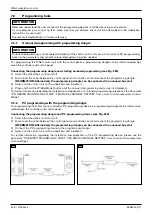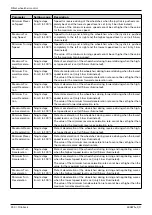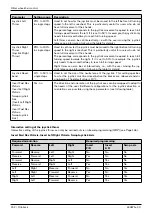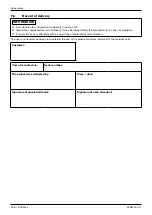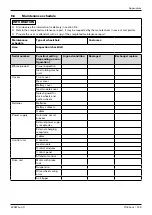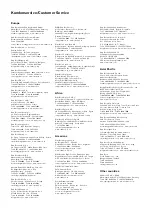
R-Net wheelchair control
490E75=0_C
Ottobock | 151
Parameter
Setting range Description
Power
Single steps
from 0 to 100%
Reduction of wheelchair power. Power indicates here the capacity of a
wheelchair to drive up a hill or to overcome an obstacle. When the value is
set to 100%, the wheelchair delivers full power. Values under 100% result
in a power reduction. This can be applied to prevent damage to doors or fur-
niture when the wheelchair is used indoors, for example. The values can be
set independently of one another in the driving profiles, i.e., separate profiles
can be defined for indoor and outdoor use.
If the value is set to less than 100%, the Boost function is automatically disa-
bled. This means that the power reduction is applied to the max. current limit.
Programming example:
Current limit = 80 amperes
Boost = 120 amperes
Boost duration = 5 seconds
Power (profile 1) = 100%
Power (profile 2) = 50%
This means that the R-Net control unit delivers a current of 120 A for 5 s in
Profile 1, then 80 A on a continual basis. In Profile 2, 50% of 80 A = 40 A is
attained without a boost.
Torque
Single steps
from 0 to 100%
This parameter can be used to increase the current for the motors at low
driving speeds. This is useful for overcoming obstacles such as doorsteps
or thick carpets or when the wheelchair rolls backwards. The parameter has
no effect at 0%. The recommended value is 80%, but this value should be
reduced if the wheelchair becomes too jerky.
Tremor Damping Single steps
from 0 to 100%
This parameter can be used to reduce the impact of a user's hand tremor on
joystick operation. The higher the set value, the greater the damping effect.
CAUTION!
When high values are entered to suppress tremors, pay particular
attention to the longer braking distance of the wheelchair.
7.4.3 Joystick parameters
The following parameters can be set under Controls/Joystick:
Parameter
Setting range Description
Joystick Forward
Throw
25% to 100%
in single steps
Used to set how far forwards the joystick must be moved before full forward
speed is reached.
This is particularly useful for users who do not have full movement of their
hands.
The percentage corresponds to the joystick movement required to reach full
forward speed. If it is set to 50% for example, the joystick only needs to be
moved halfway to reach full speed.
Forward throw can also be set interactively, i.e. with the user moving the joy-
stick (please see information following the table for details).
Joystick Back-
ward Throw
25% to 100%
in single steps
Used to set how far backwards the joystick must be moved before full reverse
speed is reached. This is particularly useful for users who do not have full
movement of their hands.
The percentage corresponds to the joystick movement required to reach full
reverse speed. If it is set to 50% for example, the joystick only needs to be
moved halfway to reach full speed.
Backward throw can also be set interactively, i.e.with the user moving the
joystick (please see information following the table for details).
Summary of Contents for 490E75 Series
Page 1: ...490E75 0_C Service manual...
Page 38: ...Service work 490E75 0_C 38 Ottobock 57 58 59 60 61 62 63...
Page 41: ...Service work 490E75 0_C Ottobock 41 70 71 72 73 74 tt 75 76...
Page 55: ...Service work 490E75 0_C Ottobock 55 103 104 105 106 107 108 109 110...
Page 108: ...Service work 490E75 0_C 108 Ottobock 227 228 229 t 230 231 232...
Page 112: ...Service work 490E75 0_C 112 Ottobock 237 238 239 240 241...
Page 143: ...R Net wheelchair control 490E75 0_C Ottobock 143 Seat module pin assignment 287...
Page 161: ...490E75 0_C Ottobock 161...
Page 162: ...490E75 0_C 162 Ottobock...







